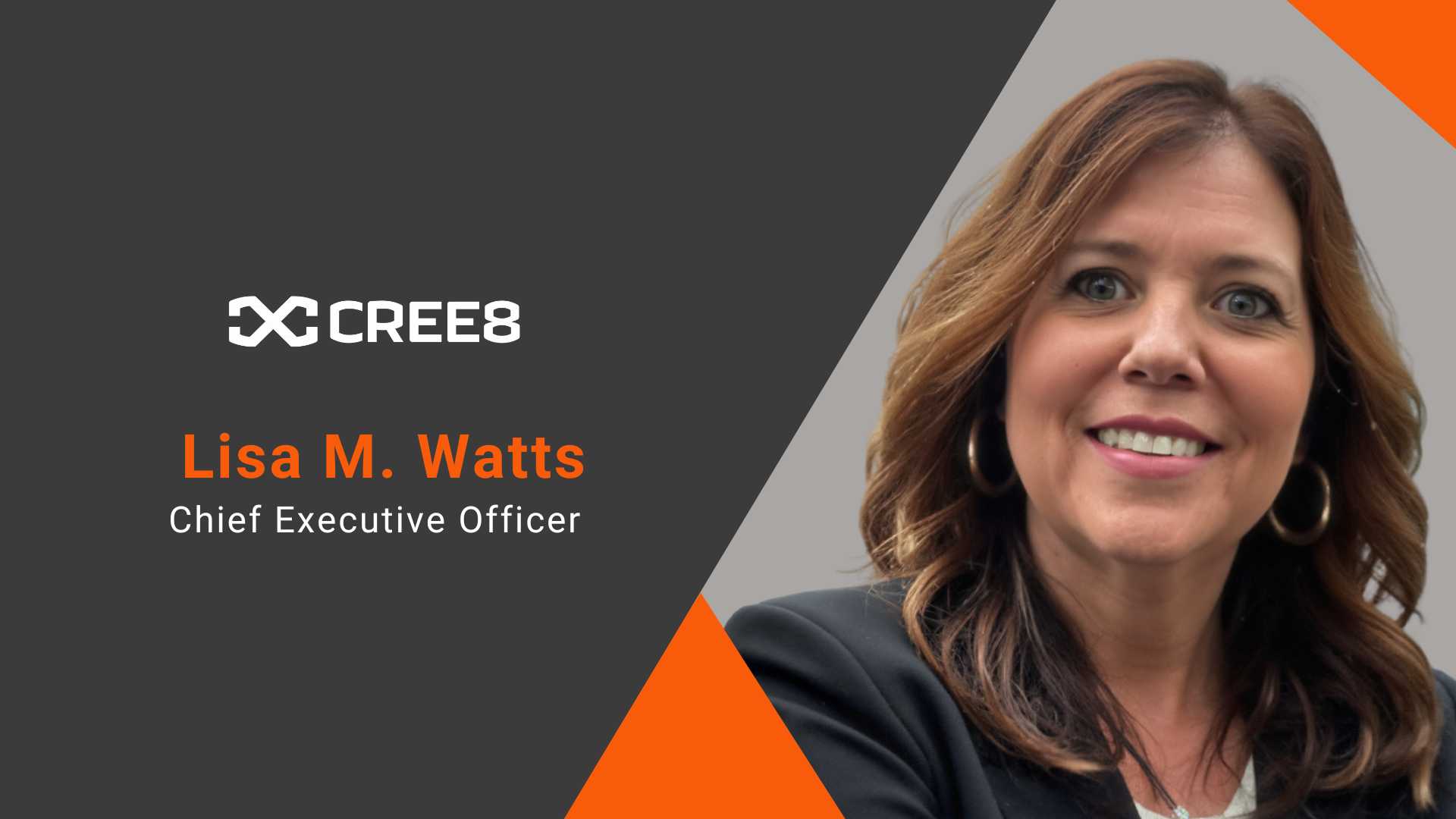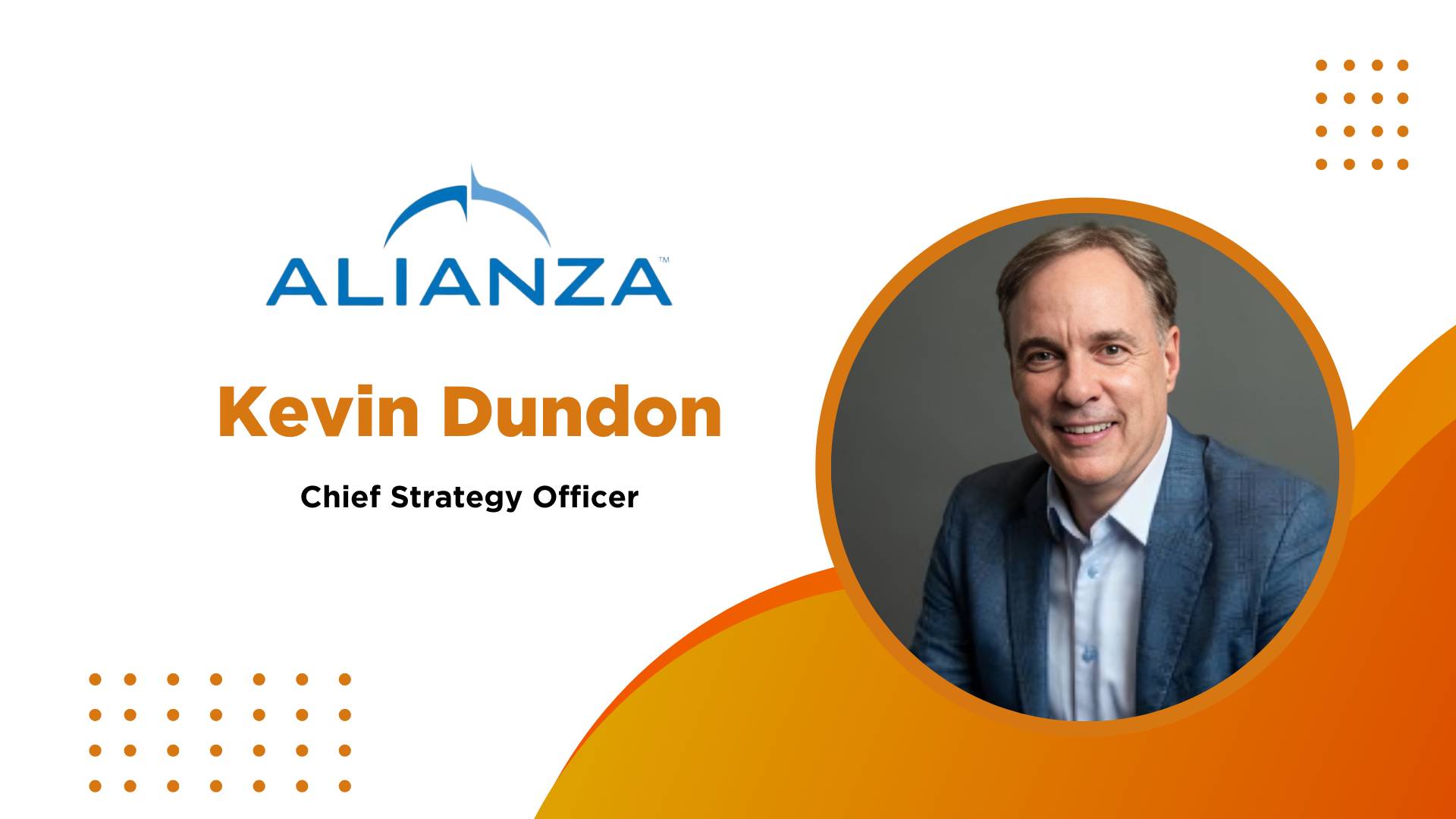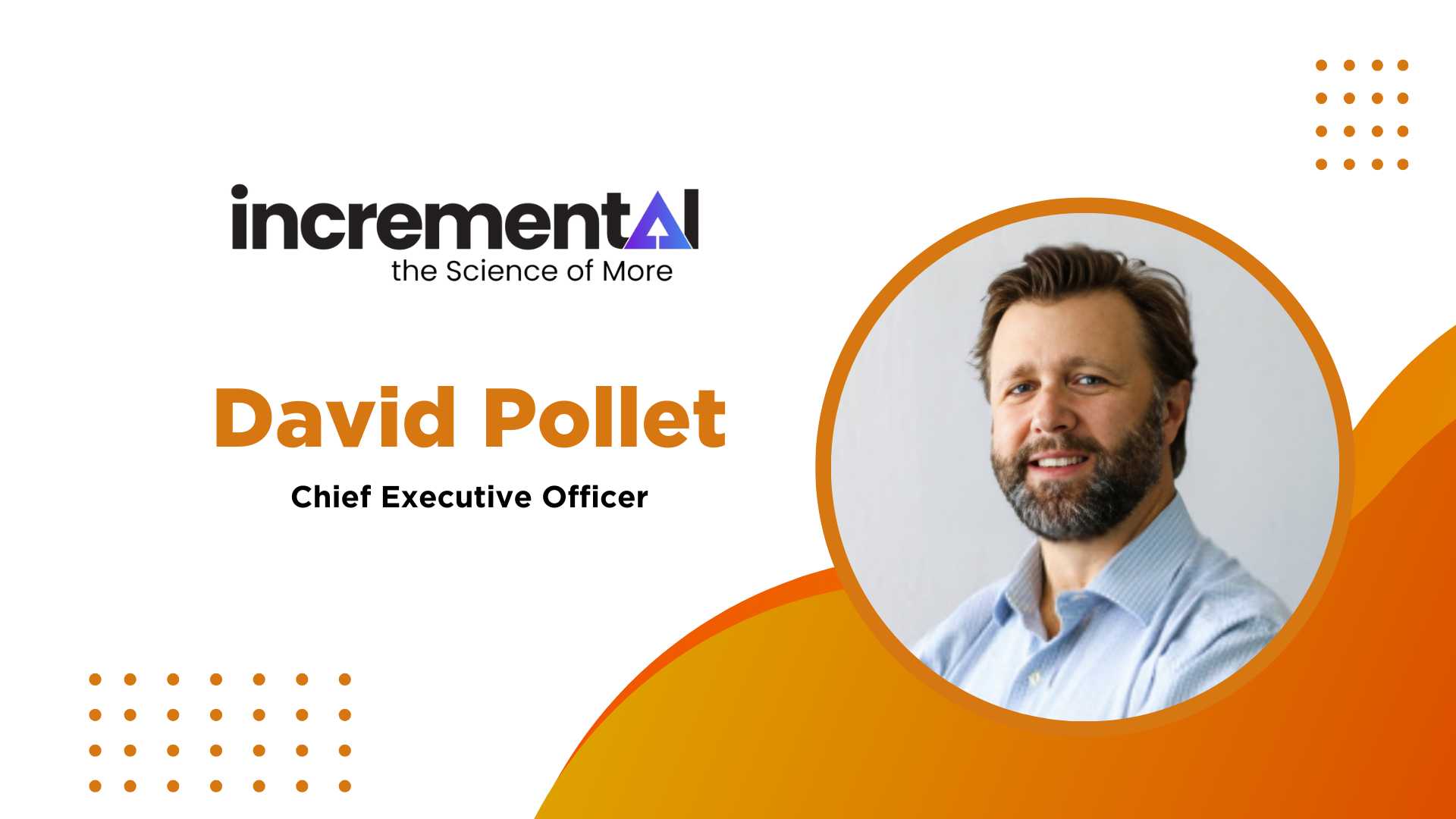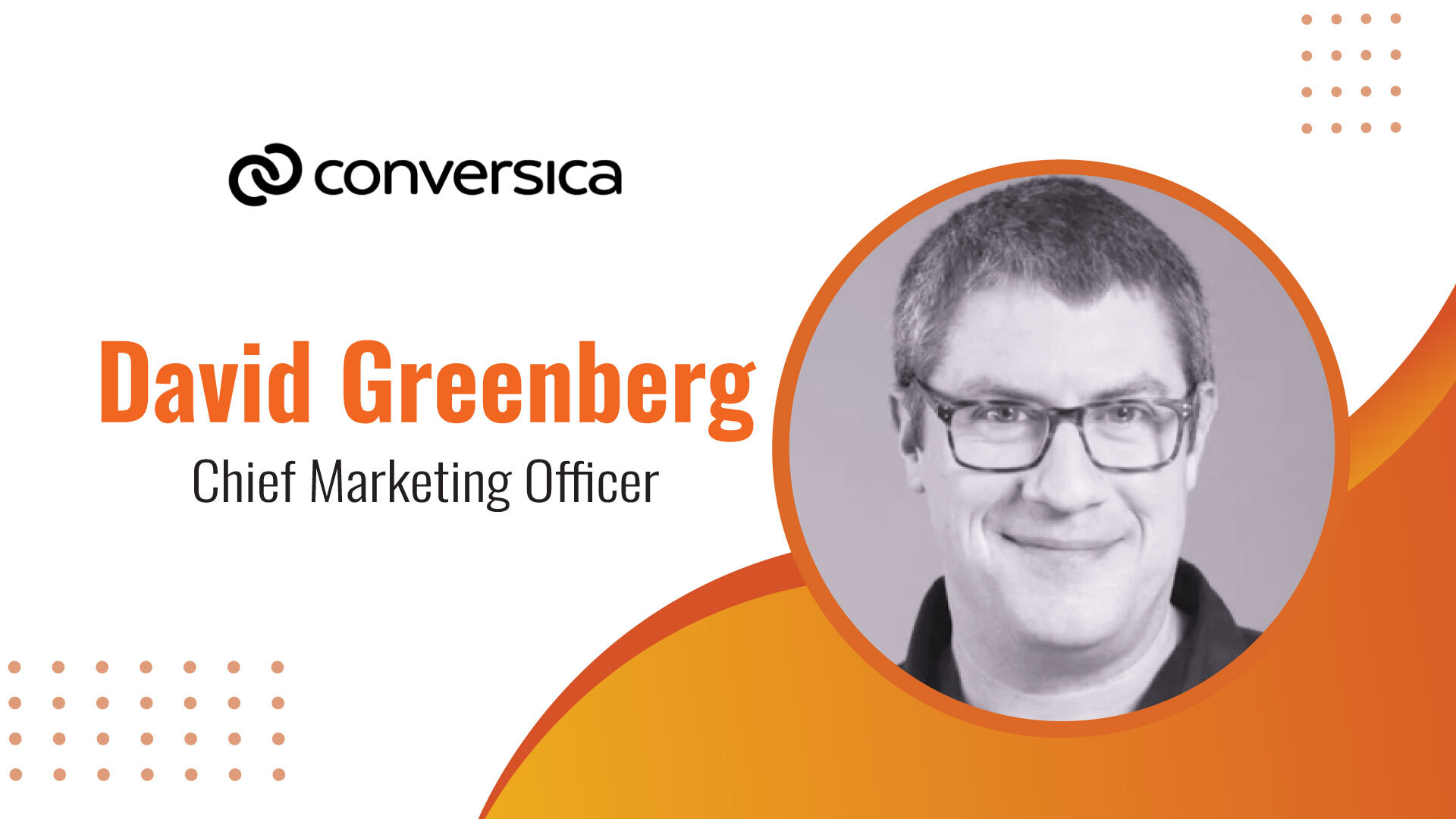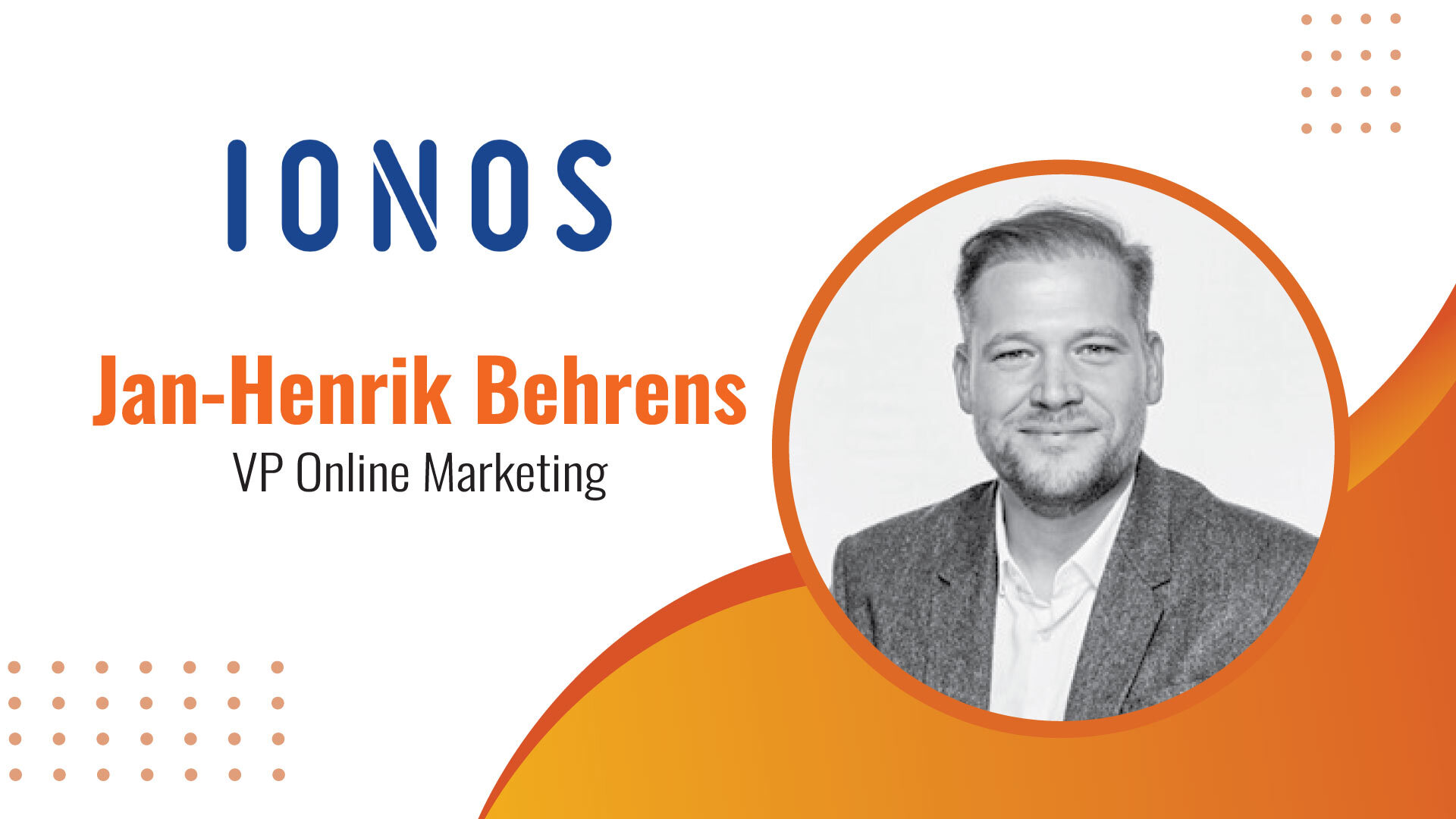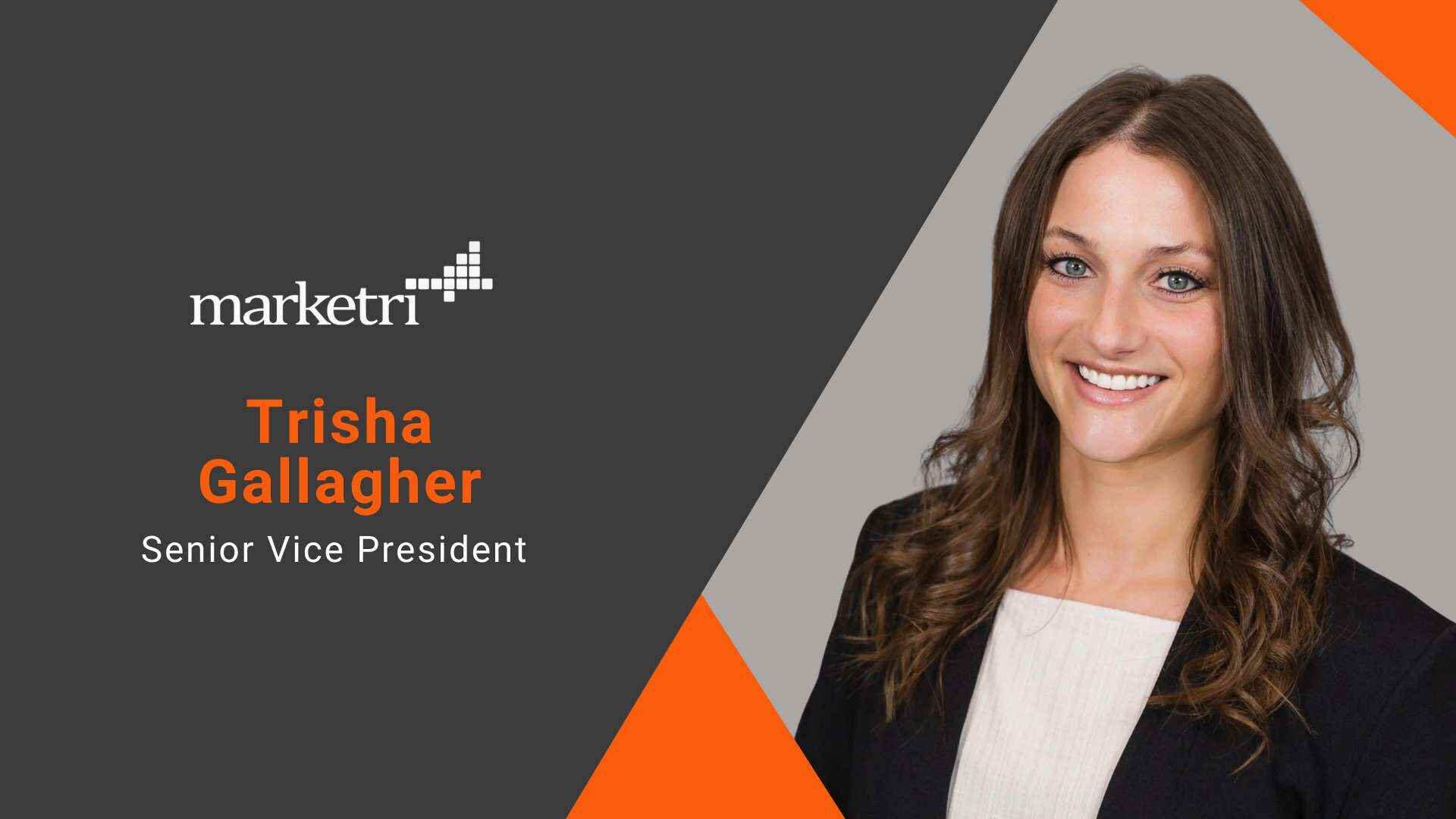
technology
Liat Barer on AI-Powered, ID-Less Audio Ads in Gaming
technology 7 Aug 2025
1. What do you look forward to about combining audio ads and ID-less, AI-powered audience targeting in the gaming space?
The intersection of ID-less targeting and immersive audio unlocks a powerful, privacy-first channel for brand storytelling. We’re excited about how AI models trained on contextual (like the game category, genre affinities and related in-game contextual elements) and behavioral signals (like gameplay patterns, game device type, time-of-day, and even specific game moments) can drive meaningful ad experiences without the direct need to track specific users. Audio, by design, doesn’t require screen interaction for engagement, so when it’s combined with smart segmentation, it delivers high-scale, low-friction user engagement. This is the future of privacy-aligned performance.
2. How are you going to approach the effectiveness of contextual or behavioral AI signals over ID-based tracking for achieving campaign precision?
We’re investing heavily in building solutions for our advertisers to be able to reach and understand gamers based on contextual signals for mobile games. Partnerships like the one we have launched with NumberEight is a great example for that. Being able to understand who gamers are based on what, when and why they play is what we believe to be the best way for advertisers to tap into the massive audience of gamers, without compromising on relevant audience targeting. Pairing that with in-game-session behavioral indicators like level progression, game experience and flow, session depth, and engagement rhythm will bring this capability to the next level, allowing advertisers to not only understand who gamers are, but to target them at the right moment and state of mind.
Instead of targeting "who the user is," we focus on where they are in their experience and how they’re playing, which is more actionable in real time.
3. Which of the Audiences mentioned (e.g., Gen Z, Affluent Consumers, Sports Fans) align most closely with your brand’s current targeting priorities?
The honest answer is - it really depends on the brand. The magic of reaching users in games, is that you can basically reach EVERYONE, since today, everyone’s a gamer. Different brands look for different audiences, and the power of being able to break down the different games based on their affinity clusters (not 3P or 1P IDs) is what makes our games-network so appealing for brands. We can today identify within our games Gen-Z’s, Parents and also Senior Citizens - and they can all be relevant for different brands, depending on what they want to get out of their campaign.
4. How do you plan to leverage seasonal and moment-based audiences like Black Friday or Super Bowl activations in immersive channels such as gaming?
We’re definitely leaning into moment-based audience packaging, especially for high-spend tentpole moments like Back to School, Black Friday/Cyber Week, Holiday Season, Super Bowl & other major global sporting events.
We use general real-time triggers (e.g., device locale, device type, time of year etc.) and also game real-time triggers (what we call ‘in game E-motions’ like in-game calendar events, in-game challenges, levels and so on) to surface themed and moment-relevant creative and segment players based on their current state of mind and context - ensuring timely, relevant delivery.
What’s powerful in audio, and made possible with AI, is that we can tailor the message dynamically, like a radio spot- without any creative fatigue or layout disruption.
5. In-game audio is praised for being non-disruptive. How important is it for your brand to balance creativity with user experience in new media formats?
It’s everything. Our entire product strategy at Odeeo is built around the principle of "audio as additive, not intrusive." We don’t pause the game or hijack the screen. That means we aim to nail the tone, pacing, and relevance of the message because users stay in the experience while the ad plays.
We work closely with brands on creative adapting, ensuring the voice, script, sound and even length fit the gaming vibe and pace. This is a huge benefit for both gamers, game developers and brands.
I think for brands this is a huge added value. No brand wants their ads to be consumed when users are in a bad state of mind or feel like the brand ad is interrupting them, so being able to get exposure while the consumers are receptive and not intruded, is a real game changer.
6. Your Affinity Audiences are built without personal identifiers. How critical is ID-less targeting in your company’s future-proofing strategy for privacy regulations?
It’s absolutely core to our roadmap. We’ve accepted that persistent IDs are a legacy tool, not a future asset. Regulations like GDPR, CPRA, and similar in other regions, alongside the evolving stance from Apple and Google signal a clear direction: privacy by default.
We’re building all our audience strategy to be based on non personalized IDs leaning on on-device signals, contextual intelligence, and AI models that adapt in real time.
Get in touch with our MarTech Experts.
Stagwell Expands Experiential Marketing with Jetfuel
financial technology 22 Jul 2025
While TEAM delivers best-in-class large-scale experiences, Jetfuel complements it with retail-focused activations that drive path to purchase—from hyper-local in-store events to national mobile tours. With strong ties to enterprise clients like Walmart and Sam’s Club, Jetfuel strengthens Stagwell’s shopper marketing capabilities.
2. What integration processes are being prioritized to ensure creative agility is preserved while leveraging the broader infrastructure and resources?
We acquire agencies for their unique strengths—not to absorb them, but to amplify them. Jetfuel will stay true to its core while gaining access to the Stagwell network, including our centralized client services team and a broader stream of RFPs that can accelerate their growth. We set out to bring many of our experiential offerings under one roof and did so by bringing Jetfuel and Gold Rabbit under TEAM.
3. How are you planning to merge data, content, and physical experiences to create more effective and measurable experiential campaigns?
TEAM leverages data and insights to deliver high-impact, highly targeted brand experiences at scale. Jetfuel adds to TEAM’s capabilities by bringing valuable shopper marketing intelligence, enhancing our overall retail offerings. Together, we can build campaigns that adapt in real time—targeting the right audiences and driving real-world conversion.
4. With rising demand for authenticity in brand engagement, how is experiential marketing evolving to address shifting consumer behaviors and expectations?
Today, relevance matters more than reach. Consumers connect with brands that show up with purpose and in meaningful spaces. We build authenticity by aligning with their sentiment and expectations.
5. What cultural synergies are most compelling in driving this acquisition forward?
Jetfuel and TEAM are both community-first, action-biased, and results-driven. Jetfuel strengthens Stagwell’s experiential platform through a shared focus on cultural relevance and performance. Abe and his team are a strong addition—they execute impactful campaigns and bring a data-driven approach that connects awareness to attribution and conversion.
6. What trends in consumer engagement and live brand experience are shaping your investment roadmap for experiential growth?
Retail is rebounding as consumers return to physical spaces with higher expectations. Community is becoming a core value—people engage with brands that feel personal and participatory. Commerce is more immersive than ever, blurring the lines between content, experience, and transaction. We're focused on the intersection of engagement and action, where ideas translate into measurable outcomes. JetFuel accelerates this momentum by delivering culturally relevant, data-driven experiences that drive conversion across the funnel.
Lisa M. Watts on How Cloud-Native Tools Are Transforming Media Production
cloud technology 29 May 2025
1. How is the transition to cloud-native workflows transforming the media and entertainment industry's approach to content production and post-production?
I think we’re seeing a real shift in mindset. Cloud-native workflows are giving teams a way to break out of rigid, legacy systems and work faster, with fewer handoffs. Instead of being tied to a single location or hardware setup, everything from ingest to delivery can now happen in one virtual space. At CREE8, we’ve built our platform to take full advantage of that giving creators the flexibility to spin up workstations on demand, collaborate in real time, and keep moving without delays. It's not just remote work anymore, it's rethinking how production should work.
2. In what ways are cloud-based solutions facilitating real-time collaboration among geographically dispersed creative professionals?
What’s exciting is that real-time collaboration is finally actually real-time even across continents. Teams can edit the same project from three different countries, with no waiting on file transfers or feedback. We’ve made it possible by virtualizing the entire post stack and syncing everything in the cloud. You can jump into a session with a colorist in London and a director in New York, and everyone’s seeing the same thing, instantly. It’s completely changed what’s possible for global teams.
3. How can media organizations balance the need for high-performance virtual workstations with the goal of reducing on-premises infrastructure costs?
I think the key is giving teams the power to scale up only when they need it. With cloud-native tools, you don’t have to keep expensive machines running 24/7. You just spin up a high-performance workstation when you need one, then shut it down when you don’t. That kind of flexibility means you’re only paying for what you use, but still getting high performance. And if you’ve already invested in some on-prem infrastructure, we can integrate with that too it doesn’t have to be all or nothing.
4. How is the accessibility of enterprise-grade cloud solutions impacting smaller studios and independent creators in the industry?
This is one of the things I’m most excited about. Cloud used to be something only big studios could afford to figure out but that’s not the case anymore. With tools like our Free Edition, even small teams can access enterprise-grade collaboration, storage, and security from day one. I’ve talked to solo creators who are now running full post pipelines from their laptops, working with teams across the world. It’s really leveled the playing field in a big way.
5. How can organizations effectively manage scalable cloud storage to accommodate varying project needs without compromising performance?
Managing cloud storage well is all about being smart with tiers and access. We help teams organize their storage so that active files stay on fast, high-performance tiers, while less-used media gets archived automatically but is still easy to retrieve. You don’t want to be paying top dollar for stuff you’re not touching, but you also don’t want to be hunting for old assets. I think the balance comes from having storage that adapts to the creative process, not the other way around.
6. What emerging technologies are poised to further revolutionize cloud-based media workflows in the next few years?
AI is definitely top of mind not just for flashy use cases, but for making real, practical improvements in how we work. I’m seeing tools that can automatically find the best takes, tag footage, or even suggest edits, which frees up time for the creative decisions that really matter. And with advances in cloud rendering, 5G, and edge computing, live cloud production is getting more viable — even from places with limited connectivity. Long term, I think we’ll see more composability too letting teams build their own workflow stacks from the ground up, completely in the cloud.
Avoid "Enshittification": Martech Scalability & Composable Solutions
technology 25 Feb 2025
1. How can businesses strike a balance between adopting innovative tools and avoiding the risk of “enshittification” – where tools lose value over time?
“Many businesses fall into the trap of seeing their tech stack as something they build and then leave alone. This simply doesn’t work in the modern business environment. Commercial needs change, customer expectations are in a state of constant flux and the rapid evolution of technology means new tools and platforms are launching all the time. Consequently, businesses that don’t have in place a process or review and renewal of their tech can find that the platforms they use degrade over time to the point that they hinder the effectiveness and efficiency of their company.
“Some monolithic solutions, which may have been cutting edge five or ten years ago, are now being used in ways they were never intended. On paper they may seem to do everything a business needs, but in practice, because the platforms have had to evolve far beyond its original design, the user experience and functionality has suffered.
“Embracing composable solutions can be the best approach. Businesses can choose the services they need from a range of different suppliers and build a tech stack tailored exactly to their needs. When these needs change, they can easily swap in tools they now need.”
2. How can businesses identify and prioritize platforms that enhance workflows and improve usability over those driven by vendor hype?
“Nothing beats talking to people who have practical experience of using a platform. Listen to your team, particularly your developers, what have they used? What have their colleagues and friends used? Most businesses will have a range of client case studies on their websites. There’s nothing wrong with reaching out to individuals at these companies to see what they really think. Although don’t just ask the CTO or senior managers - real insights into how a platform performs will be found in the team members who use it on a day-to-day basis.”
3. What strategies can organizations use to avoid becoming too dependent on monolithic systems that might degrade in functionality over time?
“It’s really important to avoid being locked into a long, inflexible contract with a monolithic provider. Many of these companies trade on their name - the safety, long term stability and fixed resourcing can all be very attractive but it comes at a cost - freedom of choice.
“If you feel you have no alternative but to choose a monolithic provider, ensure that there are break clauses. It may cost you more upfront but this may pale in comparison to, in a few years, being saddled with a solution that inhibits or damages your business’ operations.
“Ideally, go down the composable route and choose a host of suppliers that offer more flexible terms.”
4. In what ways can businesses ensure that their martech solutions remain scalable and future-proof, even as technologies and market needs evolve?
Scalability and future-proofing require flexibility at the core of any martech strategy. Businesses should focus on adopting modular solutions that allow them to evolve with market changes rather than being locked into rigid systems. The key is to select technology that integrates seamlessly with emerging tools, ensuring adaptability as new innovations enter the space.
A composable approach is particularly effective in this regard. When companies can build a stack that meets their exact needs - rather than conforming to an all-in-one solution that may not keep up - they gain the agility to scale efficiently. Storyblok, for example, follows this principle by providing a headless CMS that integrates effortlessly with various technologies, allowing businesses to future-proof their content operations without unnecessary technical debt. Regularly assessing the martech stack and ensuring that each tool continues to add value is also critical. When businesses take a proactive approach to evaluating their technology, they can ensure it grows with them rather than becoming an obstacle to progress.
5. Why is it important for companies to champion integrations, and how can they ensure their tools work seamlessly with a variety of systems and platforms?
Integrations are fundamental to building an efficient and scalable martech stack. A company’s ability to connect different tools determines how well data flows across teams, how seamless workflows become, and ultimately, how effectively they engage with customers. Without strong integrations, businesses risk creating silos that slow down processes and limit their ability to respond to changing demands.
Choosing technology that is API-first and built with interoperability in mind is key. Solutions that embrace an open approach enable businesses to connect with the platforms they already use rather than forcing them into a single ecosystem. Storyblok takes this approach by allowing brands to integrate their content seamlessly across various digital channels, ensuring they maintain flexibility as their tech stack evolves. When companies prioritize solutions designed for connectivity, they set themselves up for long-term success, avoiding the inefficiencies that come with disjointed systems.
6. How can marketers collaborate with tech vendors to ensure their tools remain effective, user-friendly, and responsive to changing needs?
Strong collaboration between marketers and tech vendors is essential to ensure that tools continue to meet real-world needs. The most effective platforms are shaped by ongoing feedback from the people who use them daily. Marketers who actively engage with their technology partners—by sharing insights, participating in early product discussions, and advocating for usability improvements—play a role in shaping solutions that align with evolving business goals.
Technology should enhance efficiency rather than introduce complexity. Vendors that prioritize user experience and flexibility, like Storyblok, understand the importance of building solutions that adapt to how businesses work, rather than forcing them into rigid processes. When marketers establish a two-way dialogue with their tech providers, they not only improve their own workflows but also contribute to the development of tools that drive better outcomes across the industry.
Martech Edge Interview with Kevin Dundon, Chief Strategy Officer, Alianza
cloud technology 14 Mar 2024
I joined Alianza more than a decade ago, just a year after Netflix CEO Reed Hastings took to the stage at the first AWS re:Invent Conference to share that the streaming giant would be moving all of its core network infrastructure to the cloud. The news was game changing and encouraged us to think differently about the business. Fast forward 10-plus years and cloud-native strategies have taken hold across almost every industry. Alianza recognized the opportunity for telecommunications and built one of the industry’s only cloud-native communications platforms tailored to service providers.
Today, through our recent strategic collaboration agreement with Amazon Web Services (AWS), we sit at a similar inflection point. Alianza recognizes the opportunities that will be driven by AI and remains steadfast in our commitment to modernizing core network infrastructure capable of delivering the latest technology innovations. These new capabilities will democratize access to technology for businesses beyond the enterprise all the way to Main Street, where Alianza supports so many communications service providers. Small business communications will be transformed by AI and natural language calling features, ushering in a new level of intelligence to the core of our economy.
As Alianza’s Chief Strategy Officer, how do you approach aligning these functions to drive overall revenue growth and business success?
Strategy is collaborative at Alianza. Our leadership team regularly sets aside “whitespace” to ideate what’s ahead for the business and what various partnership agreements, customer deals and other opportunities will mean, not only from a revenue perspective, but also for product and our customer success organizations. We often have these conversations within a healthy culture of debate, where contrary points of view are not only encouraged but expected to get to the right outcome at the right time for the business. This fosters alignment across the organization before plans are implemented, which enables us to execute with greater speed and agility even as we face challenges or setbacks.
How do you create clear & compelling differentiators for Alianza in the market, ensuring that it not only stands out from the competition but also drives real value for the customers?
Alianza is a B2B technology platform purpose-built to enable communications service providers to deliver a full suite of offerings to residential and business customers. We serve a finite market and unlike many organizations, Alianza isn’t a mere line of business within a larger organization. Our sole focus is delivering core communications services to broadband service providers.
Our complete dedication to the market is emphasized by our partner mindset. We view our customers as indispensable strategic partners. We don’t just compete based on feature functionality; we prioritize being easy to use, easy to consume, and easy to manage to drive value. We actively learn from our customers and take their input into consideration as we build and refine our platform. This alignment ensures we meet our customers’ needs throughout their entire lifecycle.
Alianza focuses on cloud-native solutions for both legacy voice and next-gen cloud communications services. Can you elaborate on the of adopting a cloud-native approach in telecommunications?
The telecommunications industry is at a pivotal moment. Legacy voice infrastructure is reaching end of life and becoming increasingly risky and costly to maintain. Telco service providers are trying to explore new revenue streams and find ways to invest CapEx, drive down OpEx, and monetize their networks. The logical path forward is cloudification. Migrating legacy infrastructure to the cloud not only reduces the cost of ownership and streamlines operations, but it also sets the stage for mobile convergence and creates an environment ripe for AI.
As previously mentioned, Alianza is working to democratize AI by bringing it to Main Street. For small and medium-sized businesses (SMBs) to harness the advantages of AI, it's imperative that service providers facilitating their core communications transition their legacy network infrastructure to the cloud.
Alianza is committed to ensuring first-rate customer experiences for more than 200 service providers. How do you approach customer relationships in a way that has an underlying partner mindset?
Alianza operates on a Software-as-a-Service (SaaS) model. This means our customers play a critical role in our revenue growth – they must sell for us to grow. Our success is directly tied to our customer’s success, and that’s why we view them as indispensable strategic partners.
Alianza’s customer success teams are largely focused on sales enablement. We equip our partner sales and marketing organizations with the tools they need to sell Alianza in tandem with our customer’s core services. We don’t just provide a service; we serve as their underlying platform and an extension of their team. By doing so, we help our customers drive down costs and contribute to their revenue growth.
Can you share some key strategies or initiatives you’ve implemented to supercharge growth and reduce costs for Alianza?
In late 2022, after increasing our engineering and development spend by 44%, Alianza committed $200 million to research and development to accelerate cloud communications growth. This five-year investment shapes our ongoing strategy, ensuring we continue to deliver service providers with the products they need to successfully move their core communications systems to the cloud.
Our R&D investment continues to drive innovation at Alianza and keep us ahead of the curve. Right now, we’re heavily investing in AI to level up our end-user experience, offer deeper insights, and meet the ever-evolving needs of our customers.
What are some current trends in the telecommunications and cloud industry that businesses should be paying attention to? How is Alianza positioning itself to adopt these trends and stay at the forefront of the industry?
In today’s market, most legacy technology industries are transitioning to the cloud. The driving forces behind this migration are cost efficiency and enhanced end-user experiences. Alianza has already fully embraced the Telco 3.0 shift, offering a full-stack cloud-native platform that helps service providers supercharge growth, reduce costs while elevating the customer experience.
Additionally, we’re witnessing a surge in demand for bundled communication services. With Alianza's robust API, service providers can integrate the Alianza platform into their existing offerings, such as Wi-Fi, broadband, and security, to create a one-stop-shop for residential and business customers. Our platform is also white labeled, enhancing its appeal to customers by granting them end-to-end brand ownership of their platform.
Given our commitment to innovation and our unwavering grit to consistently push the status quo, Alianza is strategically positioned to deliver the best cloud communications experience for telco service providers.
MarTech Edge Interview with David Pollet, Chief Executive Officer, Incremental
technology 13 Feb 2024
Hi David, thank you for this opportunity. You have an impressive background leading both startups and public companies. What motivated you to take on the CEO role at Incremental, and what excites you most about the company's future?
Thank you for having me. Retail media is at such an interesting inflection point right now. It crossed $50B in advertising spend in the US and well beyond that globally and it did so in record time. It took search 14 years to scale from $1B to $30B in spend, it took social 11 years, and retail media did it in 5. But with the rapid growth has come a whole set of challenges. The most obvious one to me was measuring the impact of all the advertising spend and that is what brought me to Incremental.
There was a clear gap in the market, for specialized measurement that understood the dual nature of this form of advertising as both a retail tool and a media form and more important was neutral. Nearly all retail media’s performance is being measured by those selling it or those platforms which facilitate their purchase, there were not any neutral measurement platforms.
This is a pattern that has played out numerous times in the history of digital advertising. Measurement is initially done by the publishers and then as the market hits a critical threshold, the demands for transparency and centralized measurement become essential to the category’s growth. Inevitably there is a need for neutral measurement partners. Filling that gap is what excited me about joining Incremental.
What key lessons and experiences from your past marketing roles do you adapt and apply your approach in leading Incremental's strategy and vision?
My professional background is a mosaic of wins and losses. I have lived through the dotcom bubble burst, and worked across the startup ecosystem, experiencing a few incredible exits and also closing the door on ideas that I thought would change the world.
Over the past fifteen years, I have delved into the applications of artificial intelligence (AI) and machine learning to help marketers understand how to make smarter decisions at the increasing speed of commerce. I have worked with companies on the cutting edge of this technology and have the pleasure of working with some of those same faces as a part of the Incremental team. My prior experience in the field has helped me to anticipate the patterns we’ve seen play out before in the growth cycles of new forms of advertising and ensure that Incremental has a finger on that pulse as retail media continues to grow.
Can you give us an overview of Incremental's measurement & predictive analytics platform? How does it help brands optimize their marketing campaigns and drive incremental growth?
Incremental’s platform at its core, provides centralized measurement, optimization, and planning for your retail media investments. By isolating the impact of retail media on revenue growth from all the other controllable (non-retail media, promotions, pricing, etc.) and non-controllable factors (seasonality, competition, etc.) the platform is able to not just an develop an understanding of how your retail media drives sales but the ability to simulate those actions before you make them.
The planning portion of the tool, enables you to simulate different investment scenarios across retail media networks to see what the impact would be on your business. Conversely you can also give it a revenue growth goal and have it back into what level of investment is required across the retail media network to achieve that goal. At its core, it brings a lot more precision into the forecasting and budgeting process.
Optimization is about deploying that budget to reach your sales goal as efficiently as possible. Last-touch attribution hides the true success of retail media campaigns, which means you may not be spending dollars where it really counts. Incremental controls for external factors, showcases each campaign’s incremental impact, and recommends ways to shift campaign budgets between campaigns to maximize sales growth. The recommendations engine is retail aware, considering factors like keyword volume, inventory and others in its budget recommendations. At the end of the day it allows you generate greater returns from your campaigns by optimizing for incremental sales.
The last piece is measurement and reporting. The retail media landscape is completely fragmented, with each retail media network providing its own measurement with different methodology makes them entirely incomparable. Our application of a single methodology across all your retail media investments give you a consistent lens and a single place to view performance.
Incremental also offers a suite of commerce analytic tools designed to assemble disparate sources of retail factors and provide a single view of cross-channel performance. This data encapsulates a brand’s inventory, finance, merchandising and retail metrics and users can drill into these key categories to unearth new insights and opportunities for growth.
Incremental focuses on driving true incrementality across channels. Can you explain how it helps brands leverage cross-channel data to boost marketing ROI?
To measure retail media you need a platform which is cross channel - able to take in both marketing and retail signals across the ecosystem whether that Amazon or an omni-channel retailer like Walmart or even your own DTC website. Incremental’s system was built to automate the collection, cleansing and mapping of that data into a centralized view. To provide retail aware measurement requires it. You need a system which doesn’t just understand you investment levels across the retail media networks and even your non-retail media investments in Google, Meta, TikTok, etc. but the dynamics of the marketplaces. Which of you SKUs are on promotion, what is the avg selling price relative to competitors, what are keyword volumes, and how do those tie back to individual products.
Our platform makes sense of that network of interconnected levers to untangle what is causing revenue growth in order to provide accurate and grounded predictions for active campaigns in real-time. This allows marketers to understand what is actually driving revenue growth and make informed decisions to improve the ROI of their campaigns based on it.
What are some common obstacles brands face while adopting incrementality measurement? How does Incremental's unified approach serve as the perfect Solution?
Brands and agencies currently have two choices when it comes to retail media measurement, neither of which are ideal. They can rely on the retail media networks to measure the performance of the media they already have a vested interest in. Each retail network using its own methodology which results in fragmentation and often leads to an inability to connect investment with performance.
Alternatively, they can attempt to use the existing tools in their measurement toolkit, such as marketing mix modeling, which is still very effective for macro level marketing measurement but Isn’t granular and retail aware, which leads to disconnect in recommendations.
Similarly, many marketers want to straddle the line between using old metrics, such as return on ad spend (ROAS), and new ones, such as incrementality. While redetermining performance metrics is easier said than done, the brands that take the time to align themselves internally and define incremental growth as the measurement of advertising performance ultimately set themselves up for success.
Reliable revenue forecasting is critical but challenging. What is your approach to optimizing sales processes and forecasts?
Early on for a start up you need to balance structure with flexibility, especially as you dial in your market fit. You need a sales motion which is structured enough that your forecasts you can tweak it and experiment to dial in messaging, and process but flexible enough to allow for the experimentation you need early on to find that fit. As you scale that balancing act can skew back towards more structure to give you tighter control on forecasting.
The Martech landscape is expanding rapidly. Looking ahead, what role do yousee Incremental playing in the future of the industry? How do you see Incrementalunifying things and contributing to convergence rather than further fragmentation?
As retail media continues to grow and evolve, unifying measurement and providing transparency into performance will dominate industry conversations, highlighting the need for a neutral third-party. We believe that neutral measurement can lift all boats, bringing transparency and confidence into this growing industry.
MarTech Edge Interview with David Greenberg, Chief Marketing Officer, Conversica
technology 4 Jan 2024
Welcome, David! Your experience in marketing spans over 25 years. Give us a peek into the formative years of your career that ultimately led you to the role of CMO at Conversica.
I am passionate about both the art and science blend that marketing offers and about leveraging technologies to create significant step-changes in the business. It all began with my dad, who was also a marketeer, and I got used to listening to his business conversations, which fascinated me and fueled my interest. This exposure laid the foundation for the career I aspired to pursue. Beginning as a practitioner, I immersed myself in diverse disciplines, actively engaging in demand generation, branding, and go-to-market strategies during the early stages of my professional journey.
The position I had before joining Conversica in 2022 was as CMO at Act-On Software, where I was responsible for the overall strategy and execution of the Marketing and Product functions. Before this role, I held numerous senior executive positions across groundbreaking organizations such as Jive Software, Airship, and Liveops.
Overall, I have over 20 years of experience as a Marketing and Go-To-Market leader with deep expertise in building high-growth organizations that disrupt the 'old way' of doing things.
Can you elaborate on the impact of Conversica Revenue Digital Assistants (RDAs) and how they have empowered marketing, sales, and customer success teams to enhance their interactions with leads and customers, ultimately resulting in improved revenue outcomes?
They are empowering these teams and upscaling their tasks by increasing their funnel conversions across their respective disciplines. For example, in marketing, RDAs help marketers increase their conversion from leads to revenue, etc.
They do this by…
Conversica's RDAs were built to have meaningful, two-way, revenue-influencing conversations with customers at any time of their lifecycle. They can autonomously perform business objectives according to the use case and needs of our customers. With Generative AI powers (launched even before the ChatGPT frenzy), they can support human teams in doing time-consuming but essential tasks while freeing up time so the team can focus on strategic activities, such as building relationships and closing deals.
They are a huge game changer for companies looking to enhance their workforce and unlock revenue opportunities that would remain untouched otherwise. RDAs can contact hundreds of people simultaneously, which is impossible for a sales, marketing, or CS team to do.
Additionally, with over a decade of expertise in AI and billions of revenue-centric interactions training its RDAs in every channel, the platform has evolved and learned how to influence and persuade customers and prospects throughout their buyer lifecycle. Conversica's RDAs offer an average of 24x return on investment, 40-50% conversion rates, and 10x pipeline growth.
In the context of Conversica, could you provide your perspective on the definition of demand generation and shed light on the specific strategies you've implemented to stimulate interest and create demand for your products/services?
Demand generation often gets confused with lead generation, but it is much bigger than that. Demand generation is about implementing strategies and tactics that build interest and desire to purchase your product. It is multi-dimensional. So, I think of it holistically - awareness, leads, post-purchase.
Key strategies we've implemented:
- Thought leadership - in our context, it has been about leading key issues in AI like ethics and chatbot satisfaction.
- Targeted demand gen - focused on key verticals and "Ideal Account Profile." As a growing company, we need to focus our dollars, so really focus more energy on these.
- Retention / Customer growth - i.e., investing in our community and ensuring there is a place for them to talk and share about best practices, new products, new use cases…
Our Powerfully Human™ conversation technology engages users in a humanlike way throughout the buyer lifecycle across all communication channels. These capabilities make Conversica's AI automation solutions mission-critical to customers of all sizes. We also have been working on strong partnerships all over the world. We launched earlier this year a partner program in which partner companies can sell our products and, along with us, even develop tailored solutions for use cases. We also have been working with Salesforce and recently announced the integration of our RDAs with their Marketing Cloud. This is a game-changer now that companies that already use the Salesforce environment can enhance their marketing programs through campaigns created using Conversica's solutions.
Integrated marketing programs are essential for comprehensive marketing strategies. Could you provide an example of a successful integrated marketing campaign you devised & led at Conversica?
With Conversica's launch of next-gen chat, we launched an integrated campaign to support it. While there were many components to this, we really took an integrated approach across PR, thought leadership content, and digital lead gen. This is a summary of how we strategized about these areas:
- PR - With the introduction of ChatGPT and the increasing familiarity of the general public with Generative AI, I spearheaded an initiative to launch our Generative AI chat tool, Conversica Chat. This catapulted Conversica into the media as the first company to launch the first GPT-powered enterprise-ready chat solution.
- Thought leadership content - Pioneering the enterprise-ready chat solution powered by PT has opened doors for us to enhance our thought leadership content. We now leverage our extensive experience as trusted authorities for those seeking expertise in this space.
- Digital lead gen - Working closely with our communication, marketing, and PR teams, we not only garnered significant media coverage but also generated an array of valuable resources for our website. Consequently, we witnessed a surge in new customer acquisition, as well as existing clients eager to adopt this innovative tool.
How is the integration of Conversica's generative AI conversational platform with Salesforce Marketing Cloud significantly impacting sales conversations and what noteworthy changes or advancements have you observed as a result of this Integration?
The combination of Conversica with Marketing Automation is going to be the new powerhouse. With the combination, marketing teams can now run their funnel and control conversion much more powerfully and at scale because they can deliver a 2-way experience with leads. Instead of traditional "MQLs," Conversica delivered 'conversation qualified leads' (CQLs), which are much higher quality and convert much faster. MAP without this is only one way and relies heavily on human horsepower and intervention.
The impact our clients that use the Salesforce Marketing Cloud report to us is impressive. One of them, Leica Geosystems, part of Hexagon, has implemented an RDA for marketing and had a 300% increase in their net-new lead to qualified lead conversions and 23x ROI, with 12% of their total opportunity value influenced by their RDA. For this use case, Conversica was a winner of the 2023 Salesforce Partner Innovation Awards.
To what extent is your role at Conversica pivotal in fostering collaboration with sales teams and devising effective sales enablement strategies, and how does this contribute to the organization's overall success?
The marketing, product, and sales teams work in a tight-knit strategy, and this is crucial for our company's success. The marketing team has been laying the groundwork for sales by generating leads, building brand awareness, creating educational resources, study cases, etc.
Could you share your strategic vision and approach for propelling Conversica to even greater heights in the coming years?
Like any company that is riding a hype wave, the wave will end. I believe we are starting to see that with G AI and the hype behind Chat GPT. Having been through this with mobile and social, we are looking way behind the hype and focusing the application of these technologies on areas where our customer base feels pain in the funnel.
In fact, a recent survey that Conversica commissioned showed that 65% of companies said may have AI-powered services in place within a year. Also, the study revealed within the next year, business leaders said they intend to use AI for 'external engagement,' i.e., customer service/support and marketing/sales outreach (39%), which are the types of solutions we offer. These trends present a great opportunity for Conversica to reach even greater heights in the near future.
MarTech Edge Interview with Jan-Henrik Behrens, VP Online Marketing, IONOS
technology 21 Nov 2023
Welcome, Jan! Could you share how your background in economics enables you as the VP of online marketing at IONOS?
My education in business administration and e-commerce helps me daily in making marketing decisions. Online marketing has a high impact on the economic future of the company. Having internalized business processes here is an important factor in thinking entrepreneurially.
In what ways does IONOS serve as a 'one-stop shop' for all digitalization requirements?
We are a one-stop shop for SMEs in particular. Our new structure allows us to grow with our customers while meeting the needs of professional web users. This starts with a domain name and a professional email address, continues with entry-level products such as website builders and collaboration tools, and can be extended to an enterprise platform, depending on individual needs.
Small and medium-sized businesses are a significant focus for IONOS. How do you tailor your online marketing strategies to cater to the specific needs of SMBs?
Yes, that’s right. Small and medium-sized enterprises (SMEs) are the backbone of many economies, which is precisely why we are passionate about supporting local entrepreneurs through our products. This is reflected in our online marketing communications, where we emphasize these very qualities. Understanding the specific problems or challenges that an SME faces is crucial as a starting point. After we’ve truly understood these issues, we approach our communications with the intent to solve them. We also fine-tune our marketing strategies to specifically target these small businesses to reduce inefficiency. Our aim is to engage in sharp, clear communication that provides a solution to the exact problems they face, directly addressing the needs of our intended audience.
Can you share a few examples of online marketing campaigns under your leadership that garnered unprecedented positive results? What distinct approaches did you employ for each of these campaigns?
Our products are generally not purchased impulsively. We can see this in the data. Users often visit our pages several times to gather information, perhaps comparing them with other providers or collecting information before deciding to make a purchase. This initial phase, the beginning of a customer journey, is very important for convincing a potential customer about us.
At IONOS, we’re currently in a dynamic phase, heavily investing in our brand. This investment is having a significant impact on our online marketing strategy. We’re supporting this branding phase with a comprehensive 360-degree approach to digital marketing. In every marketing channel, we aim to guide the user through every stage of the customer journey with targeted communication. This starts from the brand-driven awareness phase and extends all the way to the conversion-focused purchase phase. We’re leveraging all the tracking technologies available to us. Our goal is to achieve maximum brand penetration in the market while also attracting a lot of new customers. We’ve successfully managed this balance in several European countries over the past few years. As a result, we’ve been able to build our brand very profitably, which is why we plan to continue investing in our brand in the future.
Can you provide insights into the latest offering from IONOS, the AI website generator, and how it enables professional website development in no time?
AI is rapidly redefining the way websites are built. With the new Website generator for IONOS MyWebsite Now, SMBs can now create a complete website with a homepage and up to four subpages. All they need to do is enter their company name, industry, and a short description, and it will generate three design options for businesses to choose from. They select their preferred option and simply edit & expand it. Here again, we use AI tools to automatically generate images from a simple text command. SMBs can also choose from 12 different tones to find the perfect tone for their website content. In addition, the IONOS MyWebsite Now offers an AI SEO text generator to generate search engine-optimized headlines and text.
What criteria do you consider when evaluating marketing technology software?
Aside from the obvious factors such as features and price, we also place a strong emphasis on data security and the location of data storage. At IONOS, we are very conscientious about data security, and this is reflected in our choice of software.
The digital marketing landscape is constantly evolving. What recent trends or innovations in online marketing do you find particularly relevant to IONOS?
One of the biggest trends is TikTok. It’s not exactly new, but the consistent increase in reach is quite impressive. What is interesting here is that it operates very differently from other video platforms. One has to adapt to it, and then it is possible to reach any target group on TikTok. Furthermore, the development of internet privacy is a major issue. Google aims to improve internet privacy by phasing out third-party cookies from its websites. Firefox and Safari no longer support them either. These changes will have a significant impact on banner ads.
Page 1 of 2
Most Recent
Transforming Marketing into a Growth Engine
Interview Of : Alexandra B. Mazzi
AI Search Optimization Can't Wait: Why Marketers Must Adapt Now
Interview Of : Laurie Naspe
The Rise of Agentic AI: How MetadataONE Is Transforming the Entire GTM Workflow
Interview Of : Lisa Sharapata
How Freestar and Audigent are Powering Future-Proof Publisher Demand
Interview Of : Heather Carver
BDR-as-a-Service: Driving Global B2B Sales Success
Interview Of : Dee Blohm
Weathering the Drought: Marketing Strategies to Survive a Dry Spell in Business
Interview Of : Trisha Gallagher


